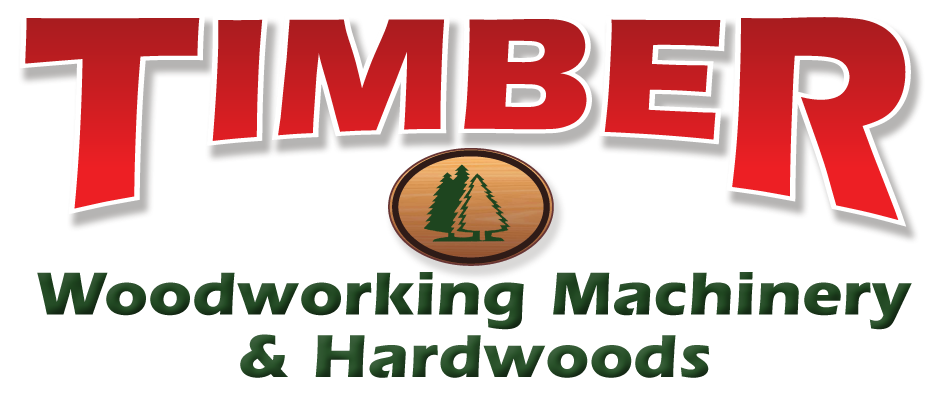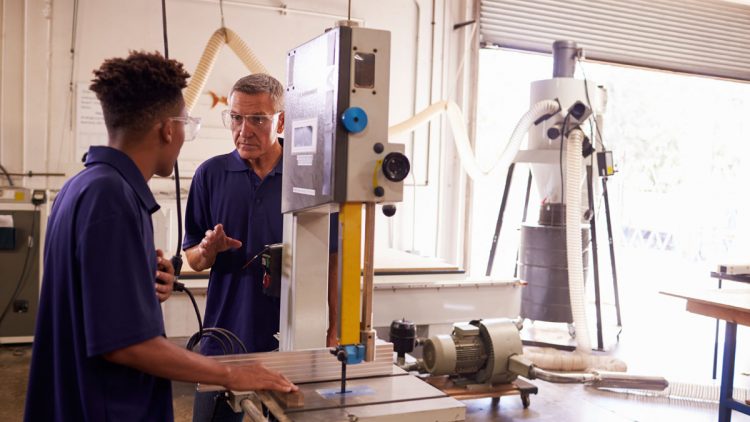What is a Bandsaw?
A bandsaw utilizes a long sharp blade that consists of a continual band of toothed metal rotating on opposite sided disks to cut materials like wood. Bandsaws can additionally be used for metal working and lumbering, however, could possibly cut a wider range of materials.
The benefits of utilizing a band saw include consistent cutting action due to the evenly distributed tooth load, and the capability to cut curved or irregular shapes.
A lot of bandsaws have 2 disks interlinked by a belt or chain spinning in the same plane, one of which is power driven. The blade comes in an assortment of sizes which allows this machine to be highly adaptable.
The blades are positioned on disks large enough not to cause exhaustion due to the flexing that occurs when the blade goes from a circular contour to a straight contour. Larger bandsaws are required to have a distortion integrated into them that counterbalances the forces and heating of operations, referred to as benching. They additionally require service at periodic intervals.
The shape of the tooth neck is highly optimized and differs subject to the type and state of the wood you are needing to cut.
Saw Types:
Below are just a few of the types of bandsaws available:
Head Saws
Head Saws are big bandsaws that make the primary cuts in a log. They come with a two-to-three-inch tooth space on its cutting edge and slivered teeth on its backside. Slivered teeth don’t cut and are intended to wipe slivers out of the way when the blade must back out of a cut.
Resaws
Resaws are a substantial bandsaw maximized for cutting wood along its grain to make larger segments into smaller segments or into veneers. Resawing veneers require a wide blade typically two to three inches with a minute kerf to minimize waste.
Double Cut Saws
Double Cut Saws come with cutting teeth on each side. They are usually very large, comparable in size to a head saw.
Feed Mechanisms
Below are just a few of the types of feed mechanisms available:
Gravity Feed Saws
Gravity Feed saws – this saw falls by its own gravity; however, changes can be made to its cutting force using a counterbalance.
Hydraulic Feed Saws
Hydraulic Feed saws utilize a pressurized hydraulic piston to power the saw through the wood, set at differing pressures and rates.
Screw Feed Saws
Screw Feed saws utilize a leadscrew for moving the saw.
Fall Mechanisms
Below are just a few of the types of fall mechanisms available:
Pivot Saws
Pivot saws swivel in an arc as they go through the wood
Single Column Saws
Single column saws have a large diameter pillar that the whole saw rides up and down on.
Dual Column Saws
Dual column saws come with a pair of large pillars, one on each side of the wood. These types of saws are the largest style of machine bandsaws faced.
Typical Tooth Forms
Below are just a few of the types of tooth forms available:
Precision Blades
Precision blades provide accurate cuts with a clean texture.
Buttress Blades
Buttress blades give faster cutting and larger feed per tooth.
Claw Tooth Blades
Claw tooth blades offer added clearance for quick cuts and soft material.
Automated Bandsaws
There are also automated bandsaws which have features like preset feed rates, returns, falls, part dispensing, and part fastening. These tend to be used in production settings in which having a machine operator per saw is unpractical.
Do You Need a Bandsaw
A hobbyist would only require a small bandsaw, which will decrease the amount of physical energy they would use cutting the wood manually.
Larger organizations like sawmills use very big bandsaws for cutting lumber as they produce very little waste and saw on labor hours.
Woodworking Supplies Mesa by Timber Woodworking
Timber Woodworking offers hardwoods in Mesa, Arizona. We specialize in woodworking tools, equipment, and supplies for commercial woodworking cabinet shops or furniture manufacturers as well as the home shop hobbyist. Contact us today, or call if you should have any questions.

